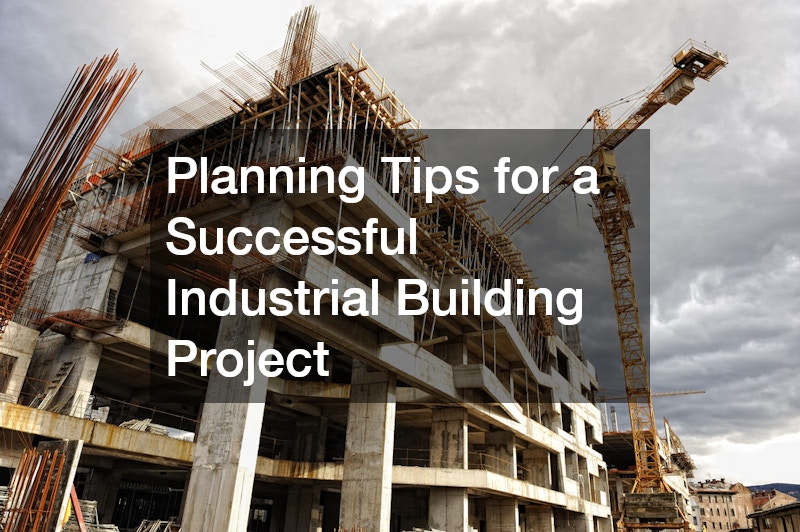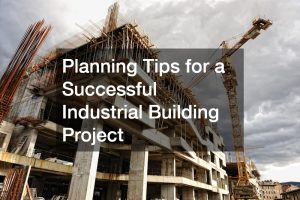Building an industrial building requires careful planning, meticulous attention to detail, and a comprehensive understanding of the various phases involved in construction. From conceptual design to post-construction operations, each step can significantly influence the overall success and longevity of the facility. Industrial buildings often accommodate large-scale operations, specialized equipment, and complex logistics, which makes effective planning even more critical.
In addition to structural and operational considerations, project planners must account for safety, environmental compliance, and budget management. This guide provides a detailed roadmap for successfully planning and executing an industrial building project, covering everything from site selection to post-construction activities. Implementing these strategies ensures that your project meets both functional and regulatory requirements while maximizing long-term efficiency and sustainability.
What Are the Key Phases in Planning an Industrial Building Project?
Feasibility Study and Site Selection
Before breaking ground, a feasibility study is essential. This step assesses whether the proposed project is viable, considering factors such as financial investment, potential return on investment, and operational needs. Site selection is closely tied to feasibility. A well-chosen site ensures optimal access to transportation hubs, utilities, and markets. Additionally, it is important to evaluate risks such as flooding, soil stability, and potential zoning challenges to avoid costly delays.
Conceptual Design and Planning
Conceptual design translates your operational needs into a tangible plan. This stage outlines the building’s layout, functional areas, and workflow patterns. Collaboration with architects, engineers, and key stakeholders ensures that the design supports operational efficiency and future scalability. Conceptual planning also includes evaluating necessary systems such as water filtration, emergency equipment installations, and security measures like armed security guards to protect the facility.
Permitting and Regulatory Compliance
Obtaining permits is critical for legal and operational compliance. Each project must adhere to local, state, and federal regulations. Environmental impact studies, fire safety standards, and zoning approvals are often required. Early engagement with local authorities facilitates smoother approvals and prevents interruptions that can arise from noncompliance.
Detailed Design and Engineering
Once the concept is approved, detailed design and engineering transform ideas into construction-ready plans. Structural engineers and designers specify materials, load-bearing structures, electrical systems, HVAC, and plumbing. At this stage, integrating professional drain cleaning systems and other infrastructure elements ensures long-term functionality and reduces maintenance issues post-construction.
Construction and Project Closeout
The final phase involves actual construction, project monitoring, and eventual handover. Skilled contractors implement the design while adhering to safety protocols and quality standards. Post-construction, a thorough inspection ensures all elements, from local storm shelter installations to operational systems, meet established standards. Project closeout includes finalizing documentation, warranties, and maintenance agreements.
How to Effectively Budget for an Industrial Building Project?

Setting Initial Financial Goals
Budgeting begins with defining clear financial objectives. This includes the total investment, funding sources, and expected return on investment. Understanding the financial scope helps guide decision-making at every stage and ensures the project remains financially viable.
Estimating Construction Costs
Accurate cost estimation considers labor, materials, equipment, and potential subcontractor services, including construction recycling and junk removal companies. Allocating funds for these services prevents budget overruns while supporting sustainable practices such as material reuse and proper disposal.
Allocating Contingency Funds
Unexpected challenges are common in industrial building projects. Contingency funds cover delays, additional materials, and emergency services like armed security guards or emergency equipment. Planning for these contingencies ensures that unforeseen circumstances do not derail the project.
Tracking Expenditures Against Budget
Maintaining financial oversight is essential. Regular tracking allows for the early detection of deviations and enables corrective measures. Using digital tools or project management software can streamline monitoring and reporting.
Adjusting Budgets as Needed
Flexibility is key. Adjusting budgets in response to changes in material costs, labor availability, or regulatory requirements keeps the project on track. For instance, incorporating advanced water filtration systems or upgrading security measures may require additional funds but enhance long-term value.
What Are the Crucial Factors to Consider When Choosing a Construction Site?
Proximity to Transportation Hubs
Location is vital for operational efficiency. Being near highways, railways, or ports reduces logistical costs and ensures the timely delivery of materials and finished products.
Availability of Utilities and Infrastructure
Reliable access to water, electricity, gas, and internet is essential. On-site infrastructure must support heavy machinery and high operational demand, which may include water filtration systems and emergency equipment.
Zoning Laws and Restrictions
Zoning compliance ensures legal operation and prevents future disputes. Understanding restrictions on noise, emissions, and building height protects the project from regulatory fines.
Environmental Impact and Sustainability
Evaluating environmental considerations reduces the ecological footprint of construction. Practices like construction recycling, energy-efficient building design, and proper waste management through junk removal companies are increasingly expected in industrial projects.
Site Geotechnical Conditions
Soil stability, drainage, and topography influence foundation design and construction costs. Conducting thorough geotechnical studies ensures that your industrial building is structurally sound and durable.
What Role Does Design Play in an Industrial Building Project?
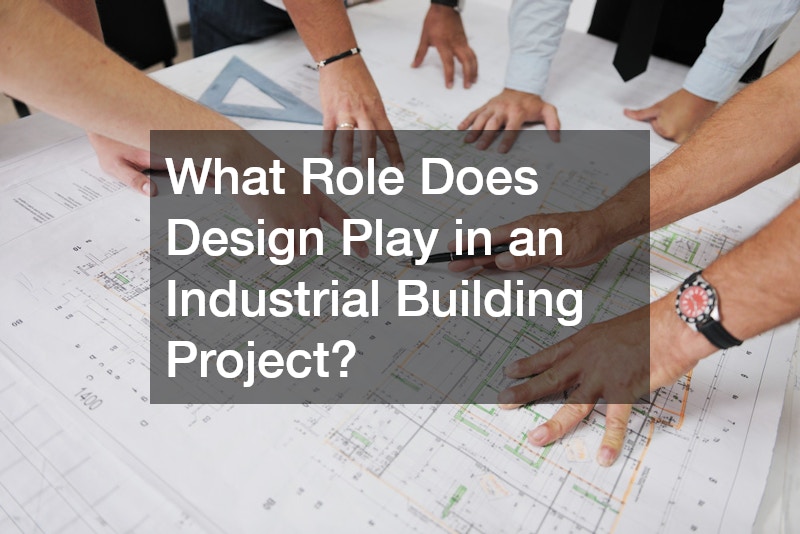
Functional Design for Operational Efficiency
The design should facilitate seamless workflow. Strategically planned layouts accommodate equipment, storage, and employee movement. Custom door manufacturer solutions can enhance security and operational efficiency.
Incorporating Sustainable and Green Building Practices
Green building practices reduce long-term operational costs. Features such as energy-efficient lighting, water filtration systems, and sustainable materials contribute to environmental responsibility and potential tax incentives.
Safety and Compliance Considerations
Design must prioritize safety, including emergency equipment installations, fire suppression systems, and storm shelters. Local storm shelter installations ensure employee protection during severe weather events.
Flexibility for Future Expansion
Planning for potential growth avoids costly renovations. Modular construction approaches and adaptable layouts facilitate future expansion without disrupting ongoing operations.
Aesthetic Value and Worker Comfort
A visually appealing, comfortable workspace enhances employee productivity and retention. Adequate lighting, ventilation, and ergonomic workstations create a positive environment.
How to Navigate Regulatory and Permitting Requirements?
Understanding Local and Federal Regulations
Familiarity with construction codes, environmental laws, and labor regulations ensures compliance and avoids fines. Regulatory knowledge also informs design and material choices, from professional drain cleaning systems to custom door manufacturer specifications.
Securing Necessary Building Permits
Obtaining permits early prevents construction delays. Permits cover zoning, safety, and environmental standards, all of which are critical in industrial building projects.
Meeting Environmental Compliance Standards
Environmental compliance may include water filtration systems, waste management through junk removal companies, and energy-efficient installations. Meeting these standards safeguards the environment and enhances corporate reputation.
Tapping Into Incentives for Compliance
Governments often provide tax incentives or grants for sustainable practices. Utilizing these opportunities can offset costs associated with green building features or local storm shelter installations.
Working With Local Authorities
Establishing strong communication with local agencies facilitates approvals and inspections. Transparent collaboration reduces bureaucratic hurdles and fosters smoother project execution.
What Are the Best Strategies for Managing an Efficient Construction Timeline?
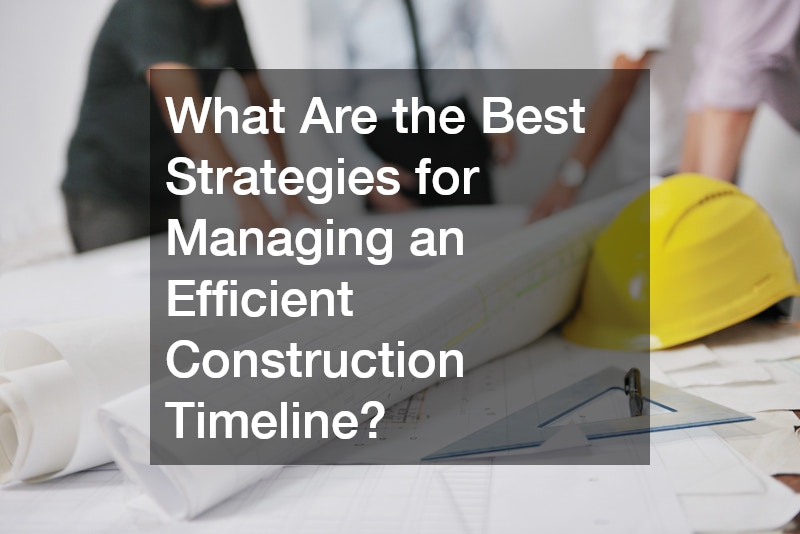
Setting Realistic Deadlines
Accurate scheduling accounts for material procurement, labor availability, and potential weather disruptions. Incorporating buffers ensures timely project completion. Detailed scheduling also allows project managers to anticipate peak workload periods and allocate resources more efficiently, reducing stress on teams and minimizing the risk of costly mistakes.
Coordinating With Suppliers and Contractors
Close coordination ensures the timely delivery of essential items like emergency equipment, water filtration systems, and custom doors. Establishing strong relationships with vendors supports smooth operations. Open communication channels with suppliers also help anticipate delays or shortages, allowing contingency plans to be enacted without disrupting the overall construction timeline.
Implementing Agile Construction Practices
Flexibility in construction allows teams to adapt to unexpected challenges. Agile methods can minimize downtime and optimize resource use. This approach encourages collaborative problem-solving among contractors and on-site teams, ensuring that minor setbacks do not escalate into major project delays.
Monitoring Progress and Adjusting Plans
Regular site inspections and performance tracking identify potential delays early. Adjusting plans proactively keeps the project on schedule. Additionally, monitoring progress fosters accountability among contractors and ensures that all tasks are completed to the expected quality standards, reducing the need for costly rework.
Addressing Delays and Disruptions Effectively
When delays occur, prompt intervention and resource reallocation reduce impacts. For instance, partnering with junk removal companies can expedite site clearing and maintain progress. Effective contingency planning also includes reallocating labor, equipment, or materials to critical tasks, helping the project recover quickly and stay aligned with the original timeline.
How to Choose the Right Construction Team?
Assessing Experience and Expertise
Selecting a team with relevant industrial building experience ensures quality work. Expertise in handling specialized systems like professional drain cleaning or emergency equipment installations is crucial. Experienced teams are also better at anticipating challenges unique to industrial projects, allowing for proactive problem-solving and smoother project execution.
Checking References and Past Projects
Reviewing portfolios and client feedback confirms the team’s capability and reliability. Past performance in building an industrial building provides valuable insight. Checking references also helps verify that the team consistently meets deadlines, adheres to budget constraints, and maintains high safety and quality standards.
Evaluating Team Dynamics and Communication
Effective communication and collaboration are vital. Teams that coordinate well internally and with stakeholders reduce misunderstandings and enhance efficiency. Regular meetings, clear reporting lines, and accessible communication channels further ensure that all team members are aligned on project goals and responsibilities.
Understanding Contractual Obligations
Clear contracts outline responsibilities, timelines, and performance standards. Contracts also cover aspects such as construction recycling and the provision of patrol services for site security. Well-drafted agreements protect both the client and the contractor by defining scope, handling disputes, and establishing accountability for each phase of the industrial building project.
Setting Performance and Quality Expectations
Defining standards for workmanship, safety, and operational efficiency ensures the final industrial building meets design and functional requirements. Explicit performance expectations also facilitate monitoring and evaluation, allowing project managers to address issues quickly and maintain the quality of construction throughout the project lifecycle.
What Are the Risks and How to Mitigate Them in Industrial Building Projects?
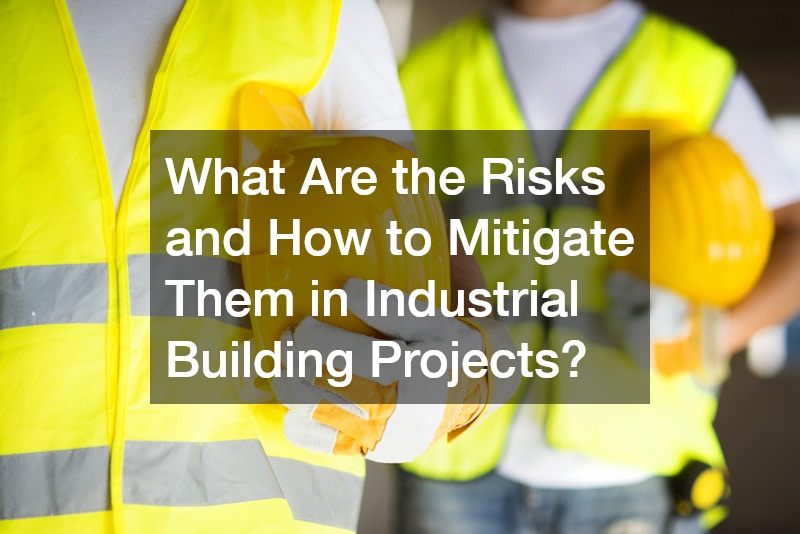
Identifying Potential Project Risks
Risks include financial overruns, supply chain disruptions, equipment failure, and safety incidents. Recognizing these early helps in mitigation planning.
Implementing Risk Management Plans
Strategies such as securing armed security guards, emergency equipment, and backup suppliers minimize operational interruptions.
Ensuring Site Safety Protocols
Safety measures protect workers and the building itself. Proper signage, protective gear, and emergency response systems are essential.
Securing Adequate Insurance Coverage
Comprehensive insurance covers property damage, liability, and worker injuries. Ensuring coverage for specialized equipment like water filtration systems enhances risk management.
Monitoring and Auditing Project Processes
Continuous monitoring ensures compliance, identifies inefficiencies, and enables timely corrective actions. Periodic audits maintain quality and safety standards.
How to Incorporate Technology Into an Industrial Building Project?
Leveraging Building Information Modeling (BIM)
BIM software improves collaboration, design accuracy, and project visualization. It helps integrate systems such as professional drain cleaning and custom door installations efficiently.
Utilizing Automated Systems for Efficiency
Automation streamlines construction workflows, reduces labor costs, and minimizes human error. Smart lighting, HVAC, and water filtration systems benefit from automated controls.
Implementing IoT and Smart Building Solutions
IoT devices monitor structural health, energy usage, and environmental conditions. These systems enhance safety, operational efficiency, and preventive maintenance planning.
Enhancing Security With Advanced Tech
Security technology, including surveillance cameras and armed security guards, safeguards the site and assets. Patrol services can be scheduled for continuous monitoring.
Facilitating Remote Construction Management
Remote management tools allow project leaders to oversee progress, coordinate teams, and address issues promptly, even when not physically on site.
What Post-Construction Activities Are Essential?
Final Inspection and Compliance Checks
Post-construction inspections verify that all building systems, including water filtration, emergency equipment, and structural components, meet regulatory and operational standards.
Operational Testing and Commissioning
Testing ensures all mechanical, electrical, and plumbing systems function correctly. Operational commissioning validates the readiness of the industrial building for immediate use.
Training for Operational Staff
Training ensures employees understand systems like professional drain cleaning, emergency equipment operation, and facility protocols. Proper training reduces accidents and improves efficiency.
Warranty and Maintenance Agreements
Long-term maintenance agreements and warranties protect the building and equipment. Scheduled services from local storm shelter installations or custom door manufacturers prolong operational integrity.
Feedback and Continuous Improvement Plans
Collecting feedback from staff and stakeholders informs future upgrades and operational improvements. Continuous evaluation supports sustainable growth and maximizes facility efficiency.
Building an industrial building is a complex endeavor that demands careful planning, financial foresight, regulatory compliance, and strategic execution. By following the phases outlined in this guide, incorporating advanced technologies, and prioritizing safety and efficiency, project managers can ensure a successful outcome. Engaging skilled contractors, utilizing patrol services, armed security guards, and professional drain cleaning services, and incorporating sustainable practices like construction recycling and proper junk removal companies are all critical for long-term operational success.
Incorporating systems such as water filtration, emergency equipment, and local storm shelter installations further safeguards the facility while enhancing functionality. Partnering with reputable service providers, including a custom door manufacturer or a document shredding company, ensures that specialized needs are met with professionalism and quality. By staying proactive, adaptive, and informed, you can achieve an industrial building that meets present requirements and accommodates future growth while adhering to the highest standards of safety, efficiency, and sustainability.
The careful integration of planning, budgeting, design, and technology ensures that your investment in building an industrial building delivers long-term value, operational reliability, and a safe, productive environment for all stakeholders.

